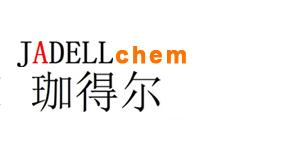Recombinant Mouse Transforming growth factor-beta receptor type 2, C-Fc 是转化生长因子 β 受体 2 型 (TβRII) 的一个片段,由 Thr23-Asp159 个氨基酸组成,C 末端带有 6His 标签。
Synonyms
TGFR-2; TGF-beta type II receptor; TGF-beta receptor type 2; TbetaR-II ; 重组小鼠转化生长因子 β 受体 2 型;C-Fc
Species
MouseSource
HEK 293 Accession
Q62312-2 Gene ID
21813 Molecular Weight
55-65 kDa AA Sequence
IPPHVPKSVN SDVMASDNGG AVKLPQLCKF CDVRLSTCDN QKSCMSNCSI TAICEKPHEV CVAVWRKNDK NITLETVCHD PKLTYHGFTL EDAASPKCVM KEKKRAGETF FMCACNMEEC NDYIIFSEEY TTSSPD Biological Activity
Data is not available. Appearance
Lyophilized powder. Formulation
Lyophilized after extensive dialysis against PBS, pH 7.4. Endotoxin Level
<1 EU/μg, determined by LAL method. Reconstitution
Reconstitute the lyophilized recombinant Mouse Transforming growth factor-beta receptor type 2, C-Fc (HEK293-expressed) (rMuTGF-beta receptor 2, C-Fc) to 100 µg/mL using ddH2O or diluted with PBS. Storage & Stability
Lyophilized recombinant Mouse Transforming growth factor-beta receptor type 2, C-Fc (HEK293-expressed) (rMuTGF-beta receptor 2, C-Fc) is stored at -20°C. After reconstitution, it is stable at 4°C for 1 week or -20°C for longer. It is recommended to freeze aliquots at -20°C or -80°C for extended storage. Shipping
Room temperature in continental US; may vary elsewhere. Background
Transforming growth factor β (TGF-β) plays an important role in normal development and homeostasis. Dysregulation of TGF-β responsiveness and its downstream signaling pathways contribute to many diseases, including cancer initiation, progression, and metastasis. TGF-β ligands bind to three isoforms of the TGF-β receptor (TGFBR) with different affinities. TGFBRI and II are both serine/threonine and tyrosine kinases, but TGFBRIII does not have any kinase activity. Canonical TGF-β signaling occurs when one of the three ligands binds to TGFBRII, which then recruits and phosphorylates TGFBRI. TGFBRII is a 567 amino acid single-pass type I membrane protein that contains one protein kinase domain. The process of PTH1R-TGFBRII endocytosis was blocked using a Ser/Thr kinase-dead mutation of TGFBRII. TGFBRII directly phosphorylates proteins other than itself or TGFBRI[1][2]. |



